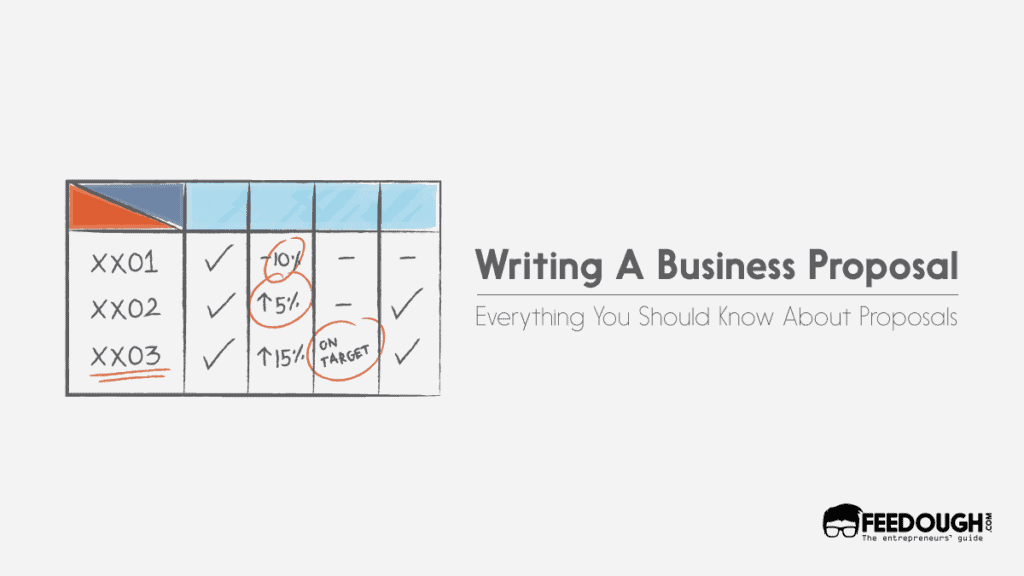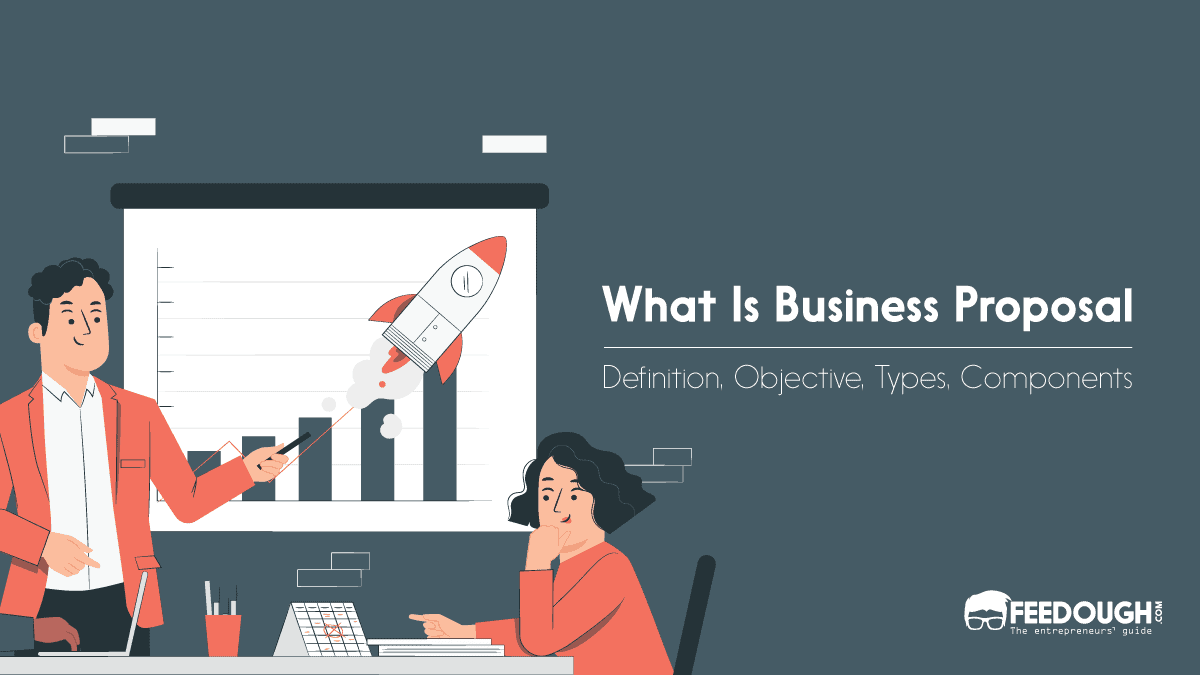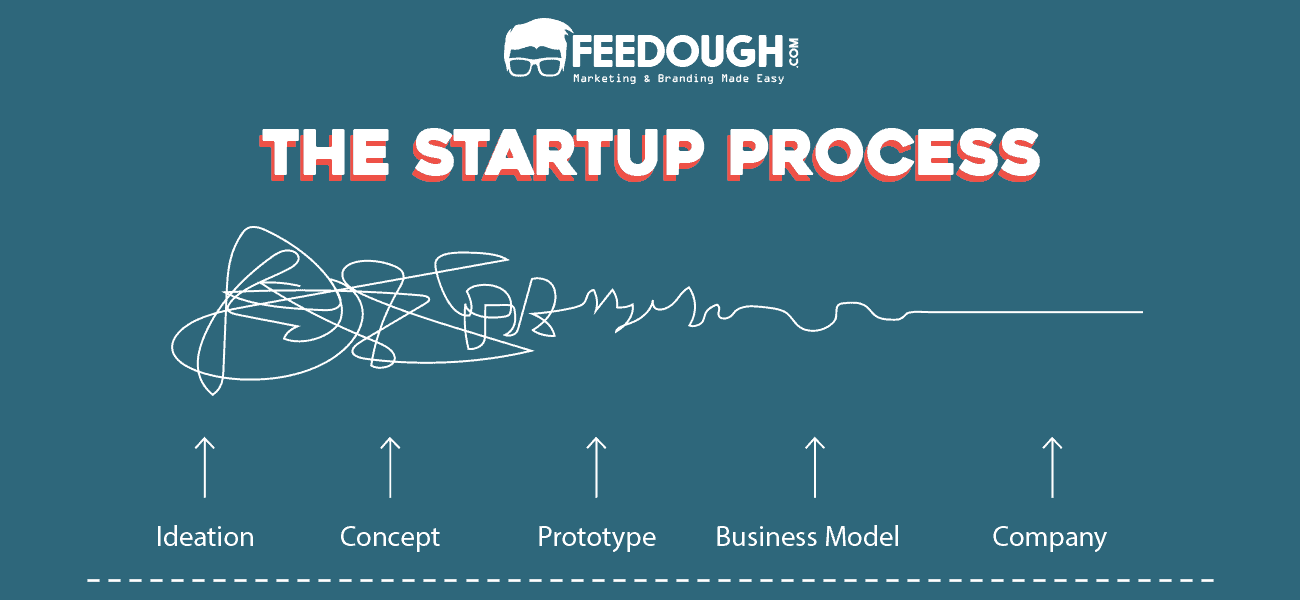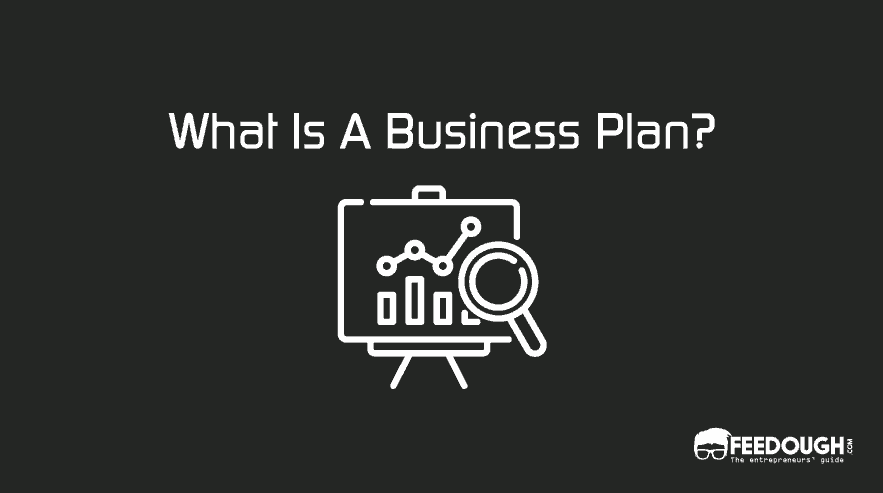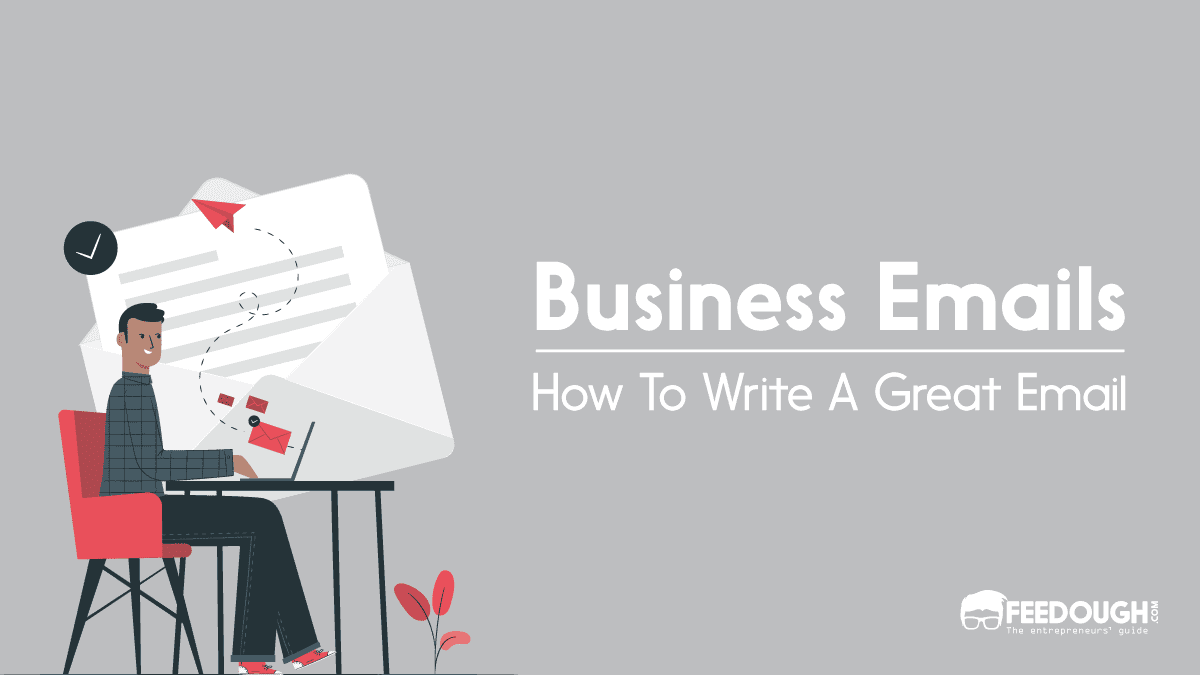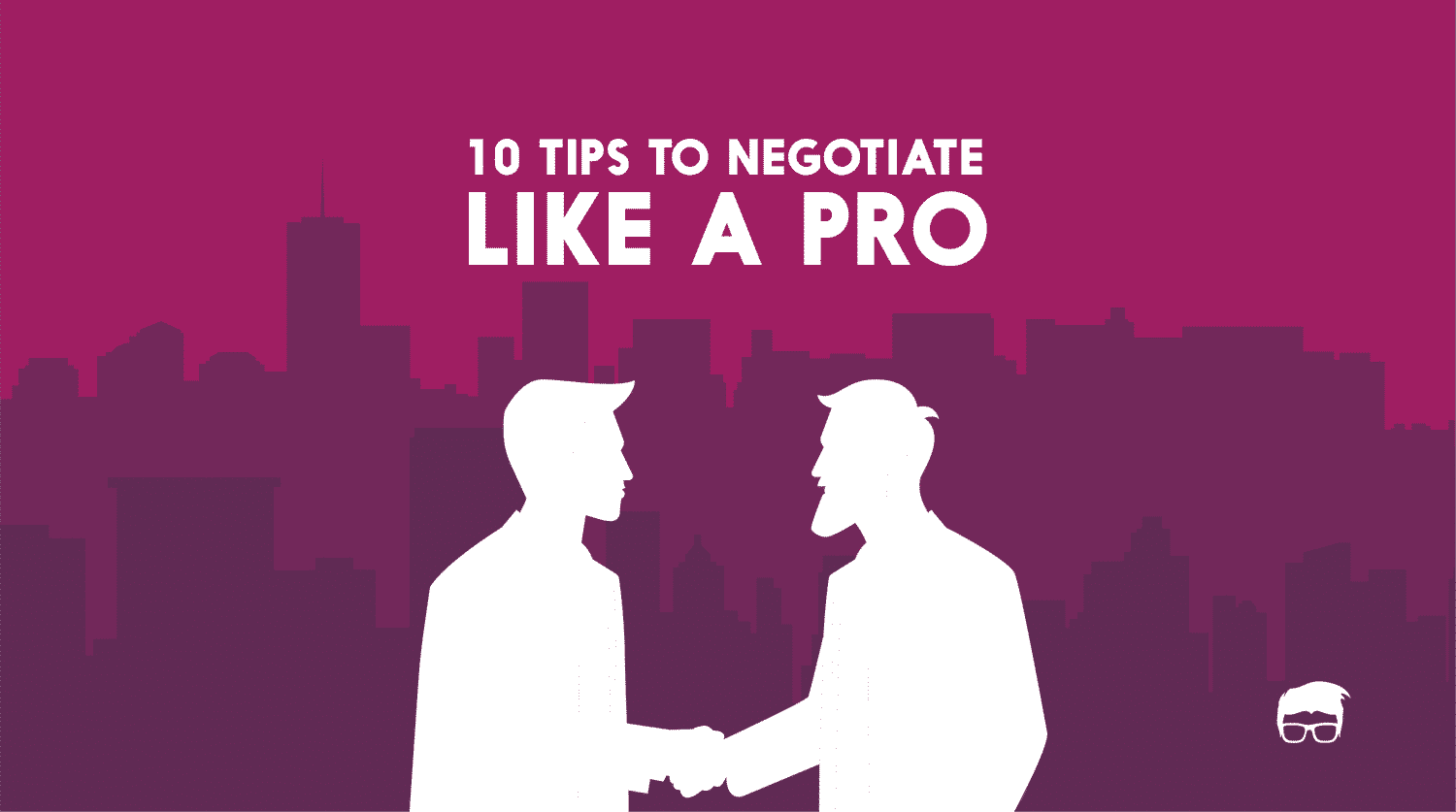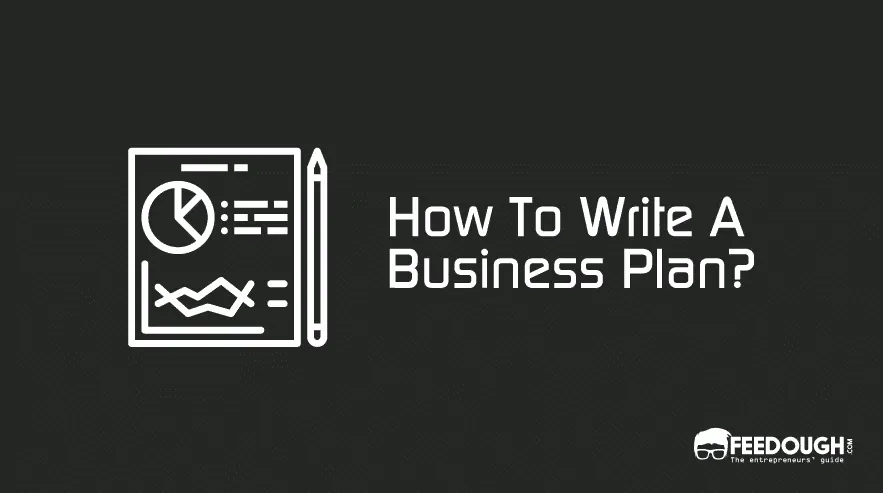“We’ll get back to you soon.”
“Your rates are out of our budget.”
“We are looking for someone with more experience.”
If you are an entrepreneur or a freelancer, you must be familiar with these phrases and know exactly what they mean. It can be tricky to persuade a client and get them to give you their business. But fret not because we have found the perfect solution for you, and that is a business proposal! How to write one, you ask?
Take a look at this detailed guide on how to write a business proposal prepared after researching and analysing hundreds of templates and proposals and get all your doubts answered.
Business Proposal Sections
Usually, a business proposal focuses on the following eight sections:
- Cover page
- Executive Summary
- The Problem/need
- The Solution
- The Deliverables
- Pricing
- About us
- Terms and Conditions
Cover Page
The cover page or the title page will create the first impression on the client. Therefore, a cover page should be well designed and simple. It should set your company’s brand identity and give a good first impression to the client.
The objective of a cover page is to portray professionalism and set the stage for your proposal. In addition, it should attract and excite the client to make them read the rest of the proposal.
How To Write The Cover Page?
A cover page usually includes some boilerplate stuff like:
- A project title
- Company name and contact information
- Client’s information
- Submission date
To attract the client and make a good first impression, you need to write a good project title. Titles like “Marketing Proposal” or “Consulting Proposal” seem a bit unimpressive and monotonous. Instead, keep the title compelling and interesting.
For example, take a look at the following cover page:

The cover page shown above is well designed yet simple. It establishes an identity for the company and has a catchy title. You should try to incorporate something similar in your proposal.
Executive Summary
Your client will probably receive a lot of lengthy business proposals from different firms and individuals. So, include an executive summary right at the beginning of your proposal to give them a brief idea and save their time. Most of the time, proposals are approved just after reading the executive summary, making it one of the most important documents in the proposal.
The main objective of an executive summary is to summarise the proposal and show the client why you are the best one for them. The document should clearly specify your company’s objectives, goals, and vision, but the main focus should be on your client’s needs and goals.
How To Write An Executive Summary?
An executive summary is a short form of your solution. It serves as an outline of the whole document. So write in a way that gets the client’s attention and makes them want to read more. Keep concise, specific, and to the point.
A good way to write up an executive summary could be to divide it into 3-4 paragraphs and assign objectives to each one of them.
- The first paragraph could be an opening statement or outline for the summary. You could state the aim of your proposal and the client’s needs. Be creative here and write an attractive and catchy statement. For example, don’t write statements like “We are a marketing company”. Instead, write, “We can revolutionise your business by helping you reach out to millions who are missing out on your product.”
- In the second paragraph, you could focus on the client’s needs portraying that you understand their requirements and can provide them with a proper solution.
- The third paragraph should emphasise the solution you are willing to provide for your client’s problem. It should highlight your approach and your company. You should write this section compellingly and attractively to make the client excited about the result and details of the proposed solution. However, don’t go into the details and intricacies of your product or services. This is the place to give a brief outline of the solution in 100-200 words.
- The last paragraph is the cherry on the cake. You could either use it to explain your solution further or simply highlight why you are the best person for this job. For example, you can include some of your qualifications, previous experience in the field, talk about your employees or anything unique about you and your company to convince the client.
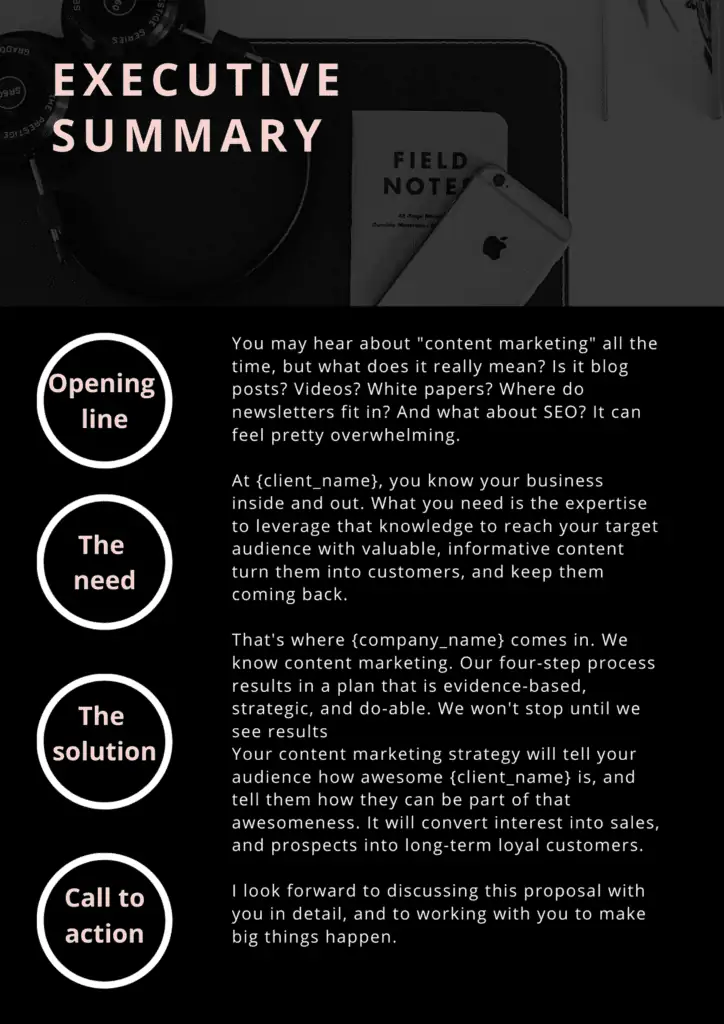
The executive summary shown above is a good example. As you can see, the section is divided into four paragraphs starting with an attractive opening line and ending with a CTA to intrigue the reader. Take a look at how the 2nd and the 3rd paragraphs are structured. The second paragraph focuses on the client and their needs, and in the third one, the company is highlighted. Although the solution is well explained and specific, it does not go into too much detail about the process or deliverables.
So, keep the executive summary precise, client-specific and straightforward. Try to avoid any technical jargon that might be difficult to understand.
The Problem
This section represents the main problem faced by the client. Before hiring anyone, the client needs to know that they understand the main concerns and expectations.
The primary purpose of this section is to show the client that you have done your due diligence and understand the client’s needs and challenges. In addition, it is used to build a relationship between the two of you, build trust and show the client that you are competent.
How To Write The Problem Section?
Before starting to write this section, put some time into research and analysis of the issue. Even if you are an expert in the industry and well experienced, some time put into issue-specific research would increase your understanding.
It is better to divide this section into a few bullet points rather than writing paragraphs. Keep the points concise and short to avoid confusion. You could also include some statistics to prove your point. Make sure to include factual issues that your client can relate to. You should be able to convince them that you get them and understand their problems. Only then will the client be able to trust you.
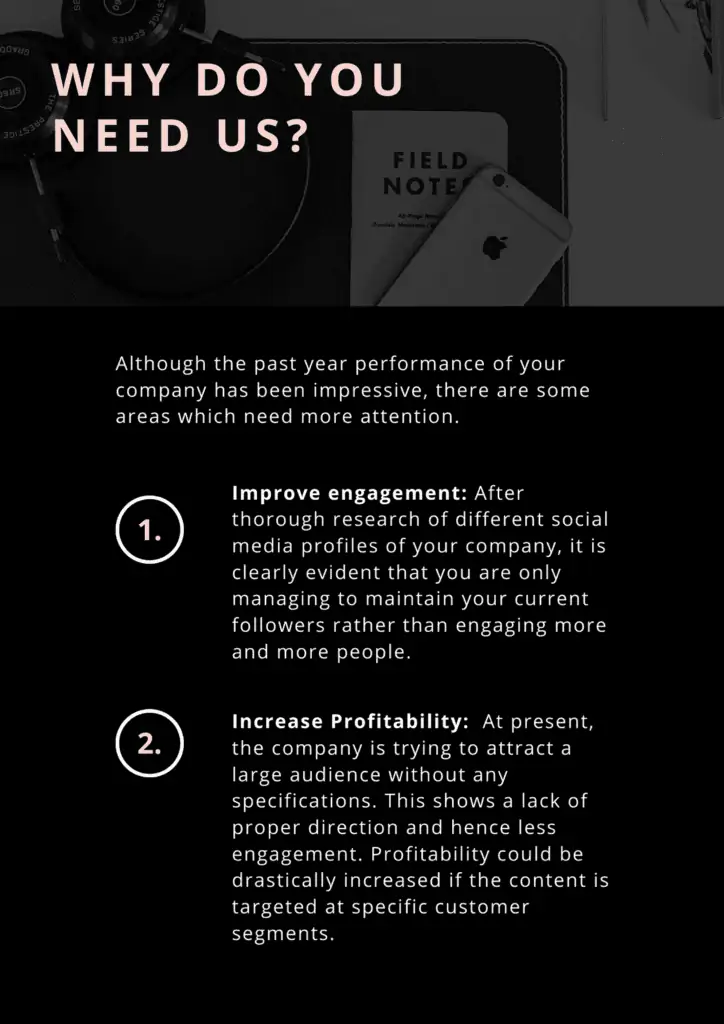
For example, the language used in this proposal clearly indicates that the firm understands the primary hurdles bugging the client. Furthermore, it is concise, well structured and personalised just for the client.
The Solution
This is the section where you are in focus. You have explained the problem. Now it is time to showcase the much-needed solution. The solution section is by far the most important in the proposal because it highlights the main selling point.
How To Write The Solution Section?
This section shouldn’t be very difficult to write as long as you know what you offer the client. You need to clearly state how you will solve the client’s problems and what is your approach. But try not to overdo it. You don’t want to confuse the reader by giving too many details. Keep the section simple and brief while clearly stating your USP.
More often than not, companies write several proposals together and deliver them to different prospects. This often feels like cold emailing where the client doesn’t feel seen. So even if you have a similar solution for one specific industry, make sure to customise and personalise it a bit according to the client’s suitability. It won’t hurt to skip out the generic details to be specific to the client’s problems.
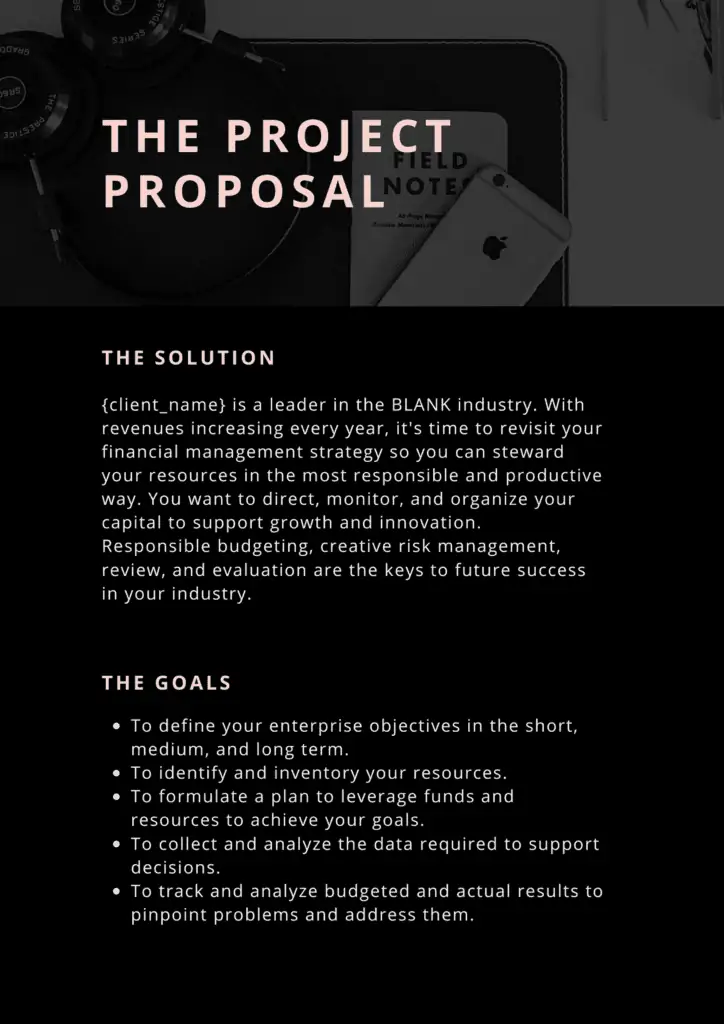
This proposal starts by introducing the main concern that needs to be solved and goes on to explain the approach. Take a look at how the language is simple and easy to understand.
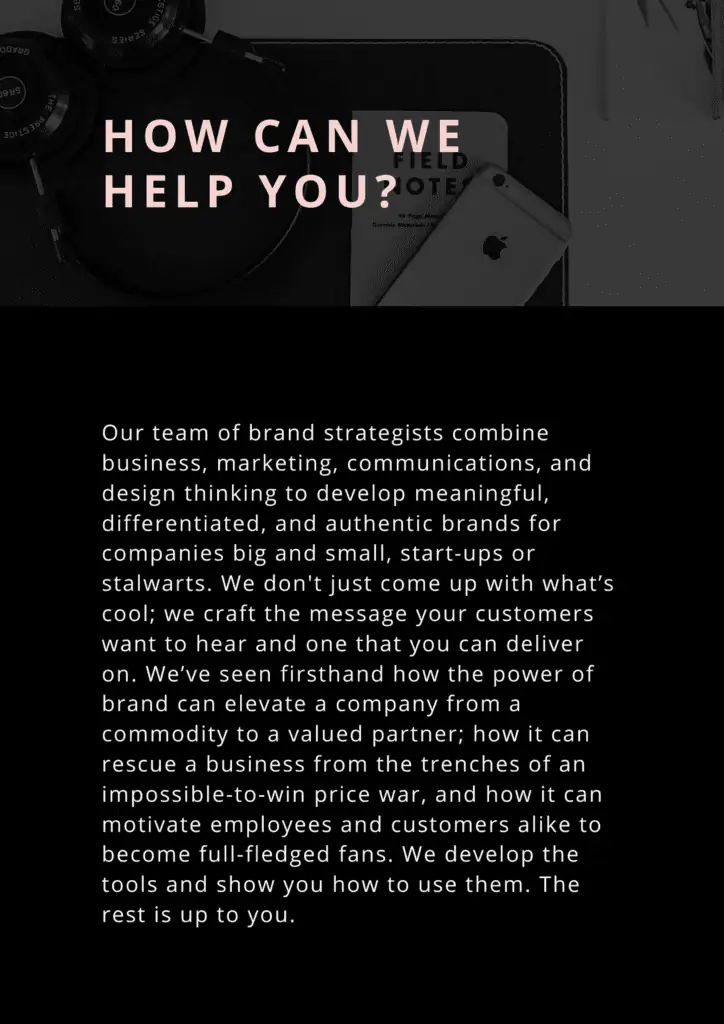
This proposal gives an overview of the process involved and the approach behind it. The company has very cleverly included their past experiences and portrayed their expertise in the field. However, one thing that can be improved here is specificity. The solution seems vague and does not explain exactly how the company will achieve the desired result.
The Deliverables
This is the section where you talk only about your product or service and how it works. While most of the time, we see the deliverables included in the solution section itself, it is a better idea to make a separate section for it if you feel the need to explain and elaborate upon the intricacies of your product.
How To Write The Deliverables Section?
This is the section where you can get creative. For example, you could add videos, graphics or images to explain exactly what you will be providing the client.
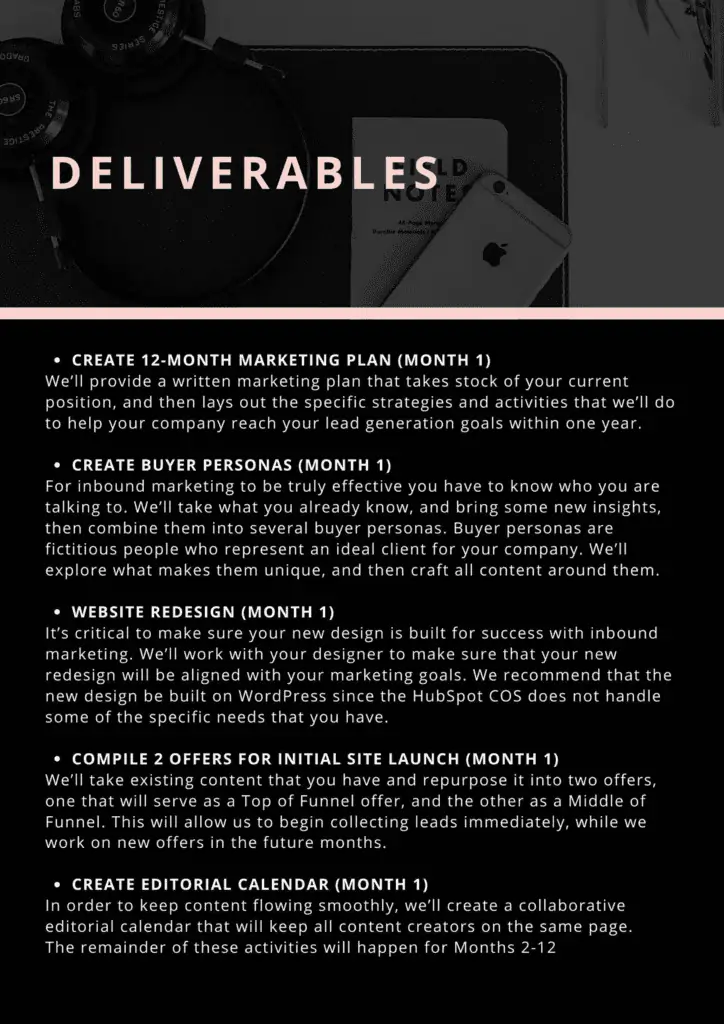
For example, the deliverables section shown above succinctly highlights all the services provided to the client. The company has even taken the time to explain each bullet point while being very brief. Additionally, they have included a timeline too and have tried to be very client-specific.
Apart from paragraphs, bullet points or images, you could include videos explaining the working of your products or highlighting the services you will provide the client. In fact, the use of videos in business proposals has been increasing over time. According to Proposify, the use of videos in proposals increased by 31% in 2020 compared to 2019.
Timeline
Moreover, to further increase specificity in this section, you could include a timeline showcasing different stages of project completion. This ensures that there is no confusion whatsoever. But make sure to discuss with your team before promising anything to the client. Finally, briefly divide the project process into different phases describing what you will accomplish in each phase.
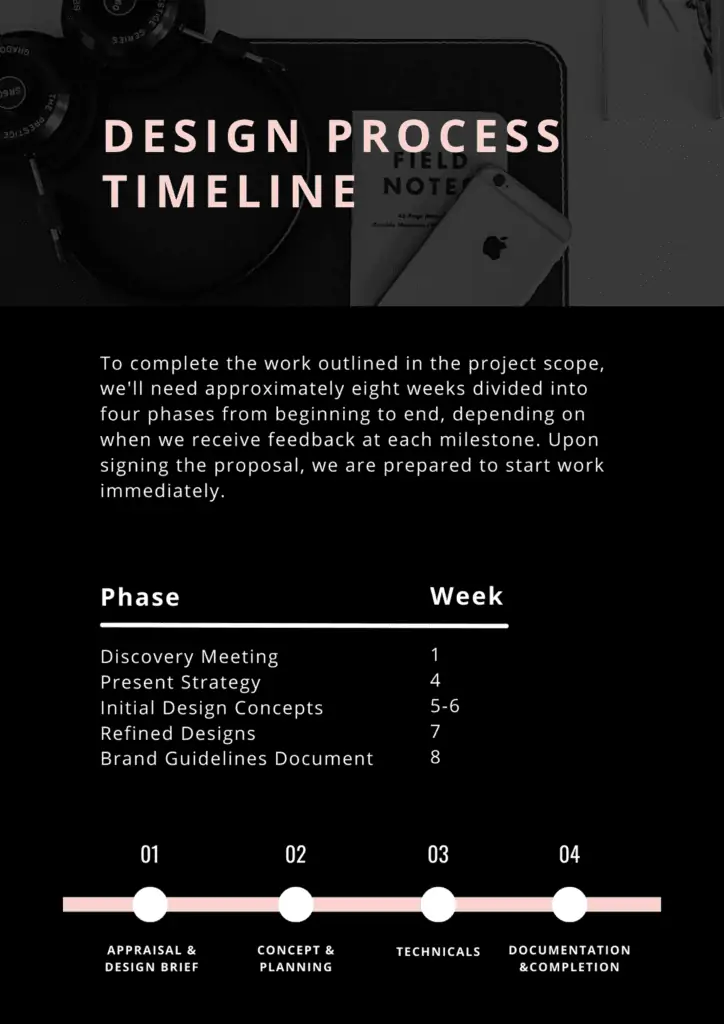
The Pricing Section
One of the most important sections in the proposal is the pricing section. Earlier, the section was considered optional, but it has become the main discussion point among the firm and the client.
How To Write The Pricing Section?
Before writing the pricing section, it is vital to understand how to name it. Although it may seem insignificant, how you name this section creates a huge difference. According to a report by Proposify, around 44% of firms name this page as “Your investment” rather than “Pricing”. It reminds the client that they are investing in their company’s growth rather than paying “fees” or incurring a “cost”.
Furthermore, keep the section interactive. That is, give your client some options to choose from. Proposals with an interactive pricing section have a 12.6% higher chance of being accepted. Be clear and specific while writing this section. Mention what all will be included in the deal to avoid any confusion. A good strategy is to divide the pricing into stages or according to deliverables.
For example, the proposal shown below incorporates all the above strategies.
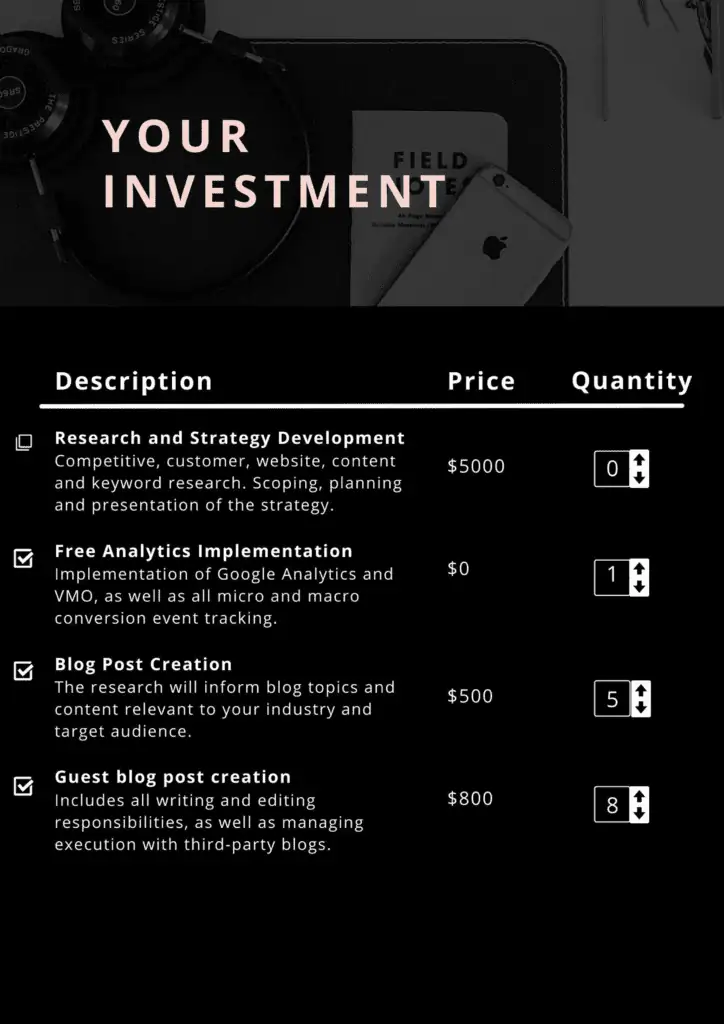
About Us
After convincing the client that you have a good solution for them, you need to convince them that you will follow through on that solution. You can achieve this using the about us section. This slide is used to show credibility to the client.
Here companies include the employees working on the project, the company founders, some case studies and past experiences. The about us section gives a face to your company and thus increases trust between you and the client.

For example, the proposal shown above highlights the team that will work on the project, their qualifications and specialities. Also, note the phrase “Meet your team” instead of “meet our team”. These small changes make a huge difference in how the client perceives your company, consciously and subconsciously. Furthermore, it also includes a small testimonial at the end to gain the client’s trust and portrays credibility.
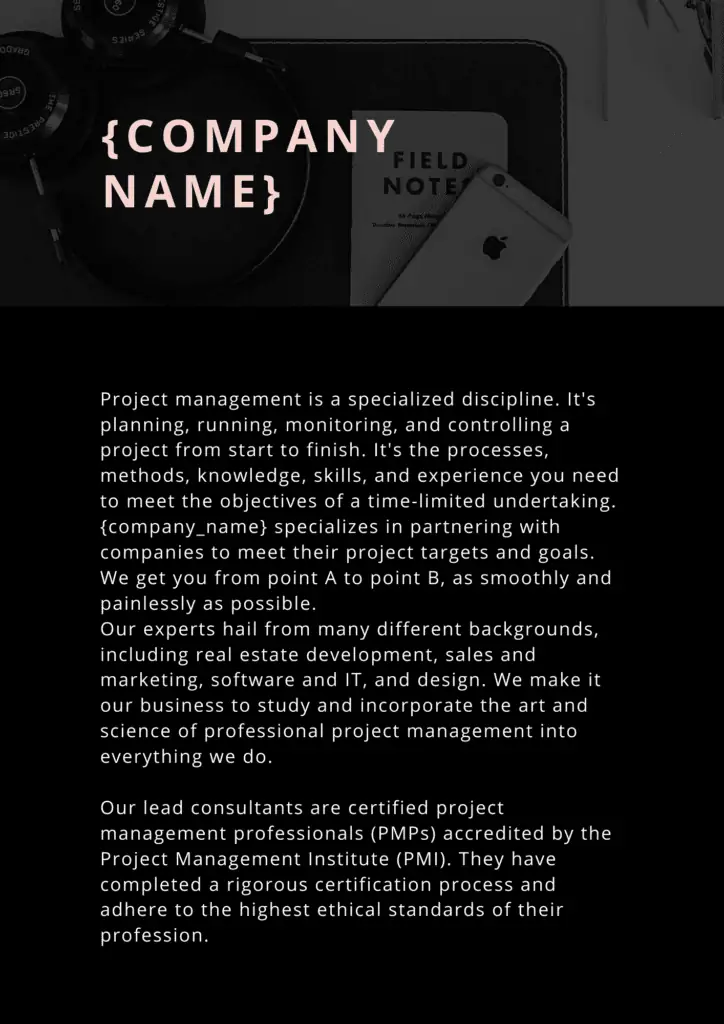
This proposal includes an overall summary of the goals and objectives of the company and its past qualifications and certifications.
Apart from these examples, you could also include case studies about the previous projects or even a video portraying your company’s work culture, employees, etc.
Terms and Conditions
Many people start feeling dizzy just by reading the head “terms and conditions”. But, this is an important section and shouldn’t be left out of the proposal at any cost. The primary objective of this slide is to avoid any conflicts between you and the client during your project. It helps keep things professional and hassle-free.
What To Include In The Terms and Conditions Section?
Some major heads to be included here are:
- What are the deliverables?
- What is expected out of the client?
- What will be the schedule and the timeline?
- Payment methods and payment schedules
- Cancellation and refund policies
The key here is to trickle down and specify each and every detail. Think of it as a summary of the whole document. Only now, you don’t have to convince the client. You just have to mention and clarify everything you will be doing and everything that you expect from the client. We recommend having your legal team handle this section of the proposal rather than doing it yourself.
Make sure to end this section with a CTA requiring the client to sign the proposal and agree to all the terms and conditions. Moreover, including esignatures in the proposal makes the deal more likely to close and also reduces the time to complete it.
FAQs
- How long should each section be?
There is no stipulated word limit as to how long you should keep each section. But make sure to keep the proposal brief and simple because shorter proposals definitely have a higher closing rate. So, include all the necessary details in each section but try not to overdo it. - How many sections should I include?
The sections described above are generic for different industries. What you want to include depends on you and your client’s needs and expectations. However, try not to make it too long by writing a lot of sections. Be as brief as you can. On average, most winning proposals include around seven sections. However, there is another aspect of this question that should - Should I use a template?
This is a common doubt asked by many people. Usually, using a template or proposal writing software is a good idea as it saves time and gives you an idea of how to structure the document. But templates are primarily used for their designs and appearances. Therefore, the content should be personalised according to your client’s needs and expectations. - How should I design the proposal?
While the online templates usually handle the design for you, it is essential to customise it according to your brand and company. The design and look of the document should develop a brand identity in front of the client. Moreover, make sure to keep the design simple and minimal because here, less is definitely more. The document should be easy to read and pleasant to the eyes.
Go On, Tell Us What You Think!
Did we miss something? Come on! Tell us what you think of our article on how to write a business proposal in the comments section.
An enthusiastic human being with determination and zeal to explore new ventures. Tanya is an entrepreneurial spirit searching for changes and learning to exploit them as opportunities and impacting people for good.
